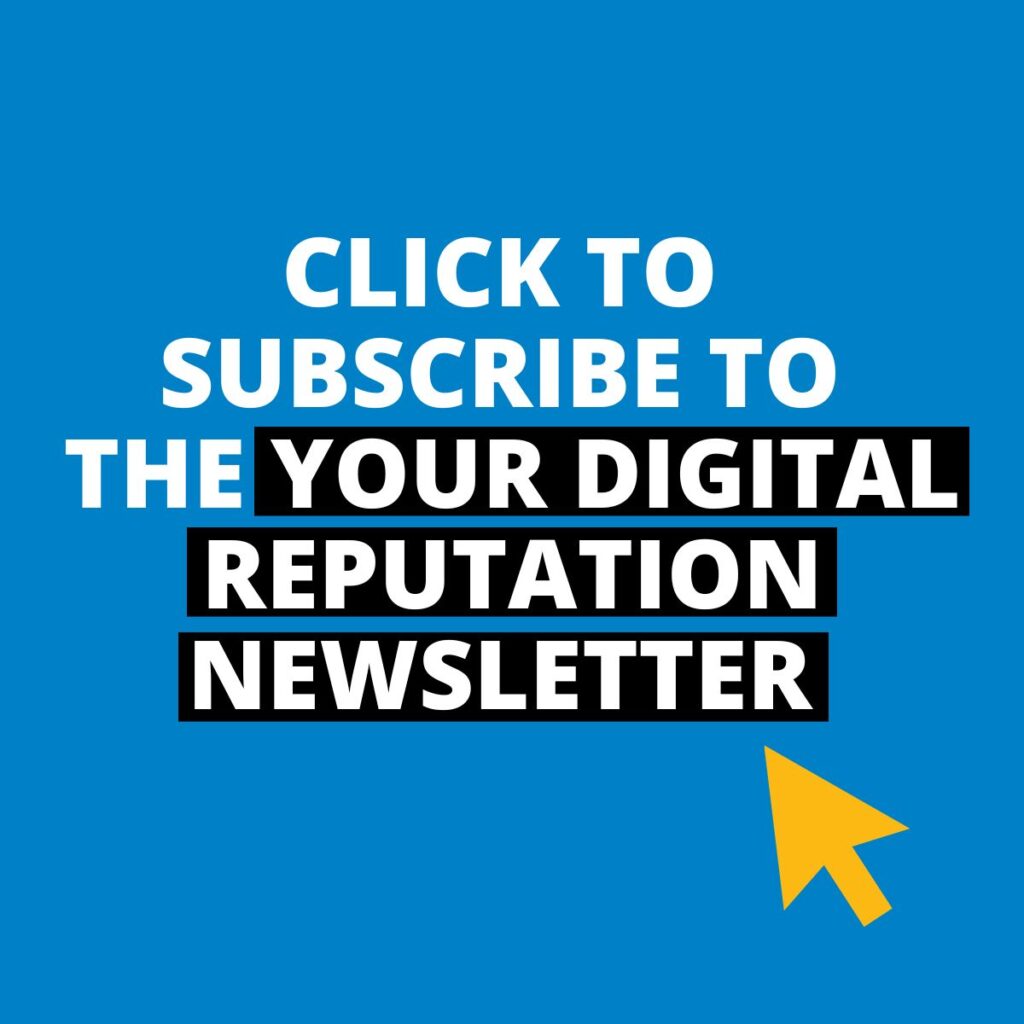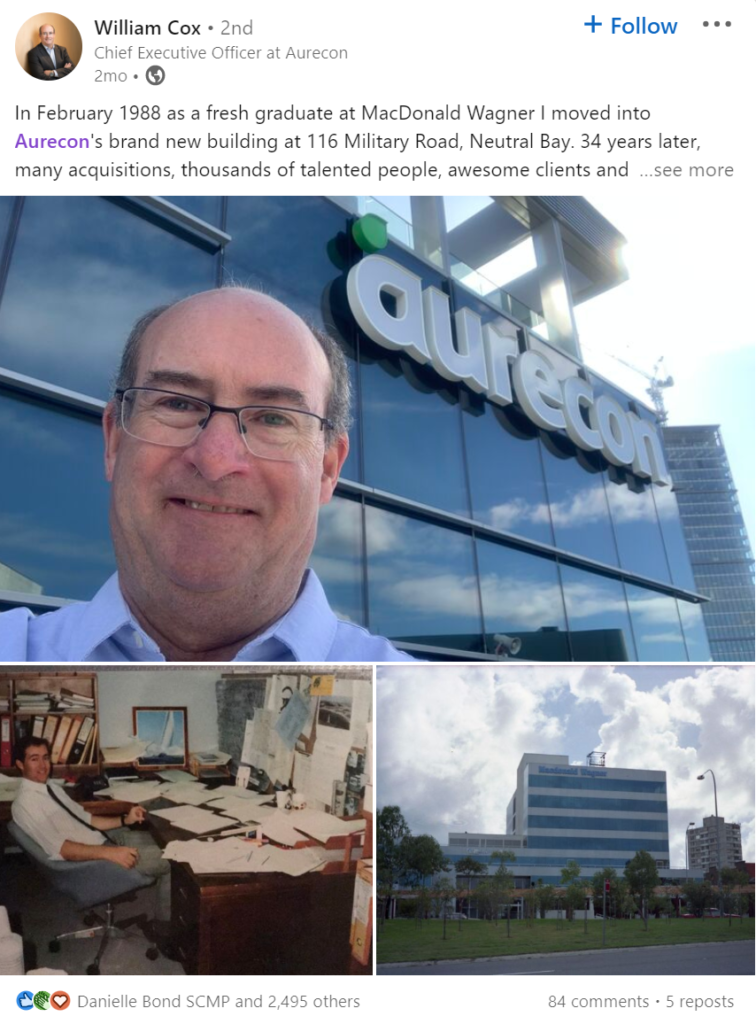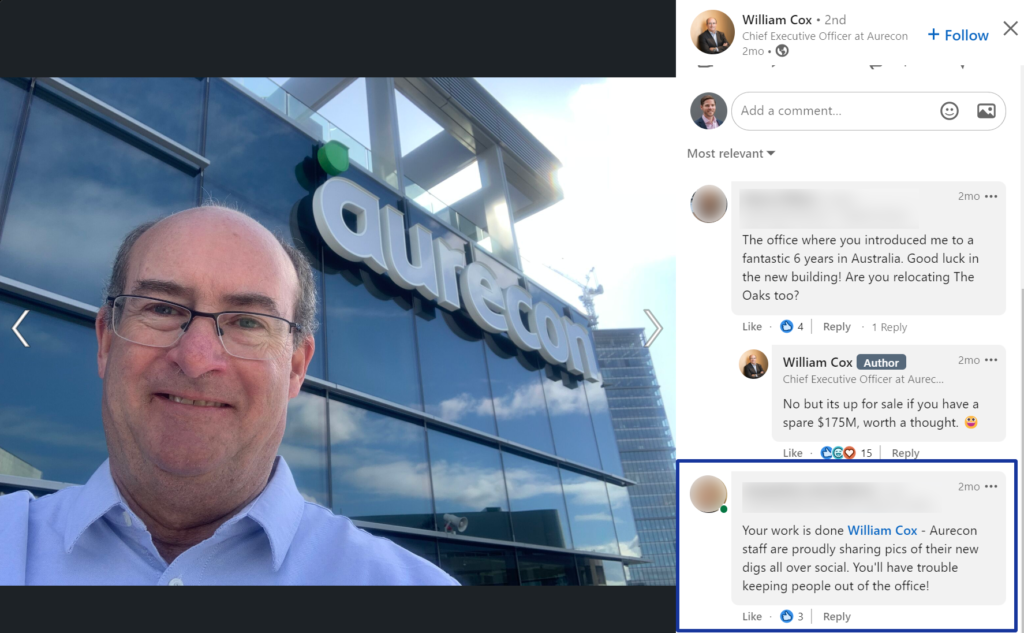In this episode we’re exploring a question relevant to anyone responsible for communications: How can leaders and brands work together online? We all know the scenario. It’s far easier for any social media post to be conceived, drafted, developed, and posted by the brand with a little cheat sheet of sorts, a sort of documental email that explains to senior leaders and others how they can use this asset.
And this approach is designed to save time and limit risk, but the unfortunate result is a very public and globally scalable ‘copy paste’ job that ends up coming across as inauthentic, scripted, or even worse, does far more brand damage than a typo.
This is what happens when a brand dictates terms and leaders and other staff are simply viewed as a way to extend the corporate message. And this is a real risk when it comes to online employee advocacy tools that provide the means to communicate online without always explaining why. So how do you get it right? How can leaders and brands work together effectively online? And what role should each play to build a trusted, credible presence? One that attracts talent, engages partners and empowers staff?
THE INSIGHTS + ADVICE.
Roger Christie: Why must leaders and brands work together online today? Why can’t brands just do everything?
Danielle Bond: Well, I think leaders are the human face of the brand, like employees and it’s not just only in the B2B environment. If you think of the business to consumer environment, there are lots of amazing examples of where an inspirational, socially savvy leader has helped the brand be successful. Richard Branson and Virgin come to mind.
Leaders make a brand relatable and brands are increasingly judged on what their leaders do and say in the public domain. So I think it’s really important for leaders to be socially savvy as well as astute about the impact they have on their brands, both for good and sometimes not so for good. I also think digital tools and social media are really important channels for companies to engage different stakeholder groups and leaders understand that. And I think particularly, these days, engaging employees is increasingly done by leaders through their social media presence.
Roger Christie: I absolutely agree with you, and I think what I’m hearing is this idea of humanising the brand. Leaders can do things [online] in a different way that doesn’t need to detract from the brand at all. Ideally, this is a complementary relationship. Leaders can do things, and particularly as you say, with employees that brands can’t and it’s important to harness both.
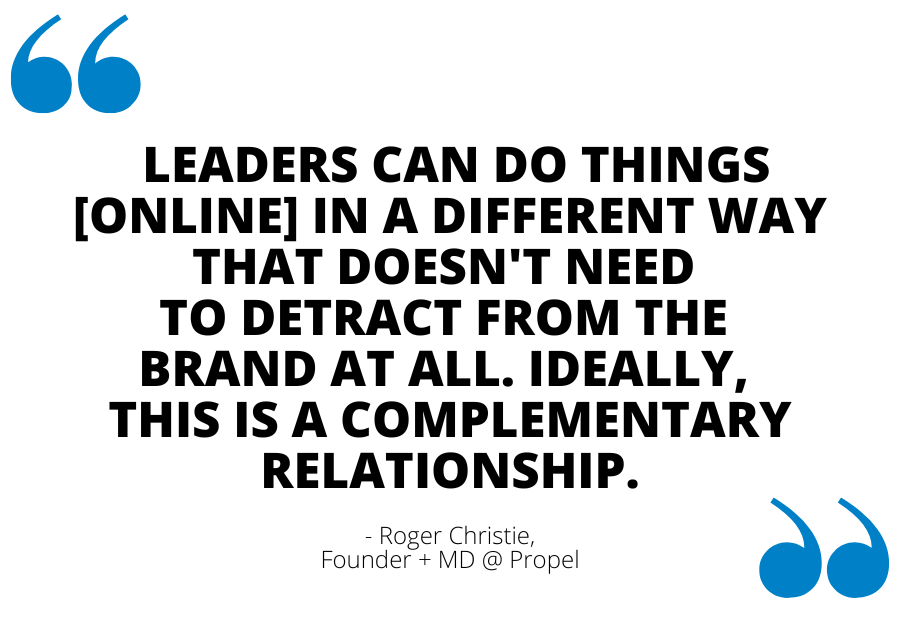
Danielle Bond: Perhaps I’ll take one step back and do the origin story for social media with me, because I do remember in the first decade of this century Facebook coming out and thinking, ‘What on earth is that all about?’ And then as a marketer, I realised that I needed to understand how it worked. I couldn’t just ignore it, even though it was my first thought to go, ‘Why would I be on Facebook?’ But then I realised as I saw it grow that actually, how could I not be on Facebook? Even if it was just to understand, as a marketing professional, what it was about.
So when I joined Aurecon in 2009, it was a new brand. The company has been around for many, many decades, but had merged and so it was a new brand in 2009. It had no social media presence. And it didn’t have some of the foundational elements that we enjoy today, such as a CRM system.
And so as the marketing professional tasked with the job of building this brand, one of the first things I looked at was social media. I worked with my HR leadership team in the first instance to go, ‘We need some kind of presence’ and we created a Facebook page. And then I remember giving advice to that same team who were looking at this new tool called LinkedIn as a potential way of transforming the way we recruited and how we positioned the company to attract talent. And I immediately recognised not just the power of the tool for recruitment purposes, but for me as a brand builder; the power of the tool to help me build our brand, engage our workforce, engage our other stakeholders in the industry, our clients and business partners.
And at the time, you could do that for free! You could build organic growth. Many like us now, invest more and certainly the cost of a recruitment license is not substantial. But those tools to start with were free, and so we just dived straight in. I remember being at our annual meeting and we said, ‘Well, what would be the next best steps?’ And I just said, ‘Why don’t we just create a page?’ And so we took off from there, experimented and learned as we went. We created our LinkedIn company page in 2011 with 1,000 followers that were mostly employees.
So we started the way we have continued, which is to speak to our workforce first about what we are doing and why, and invite them to come on the journey with us and be our first followers. And from that small start, we are now just shy of 300,000 followers, which for an organisation of our size, we actually punch above our weight.
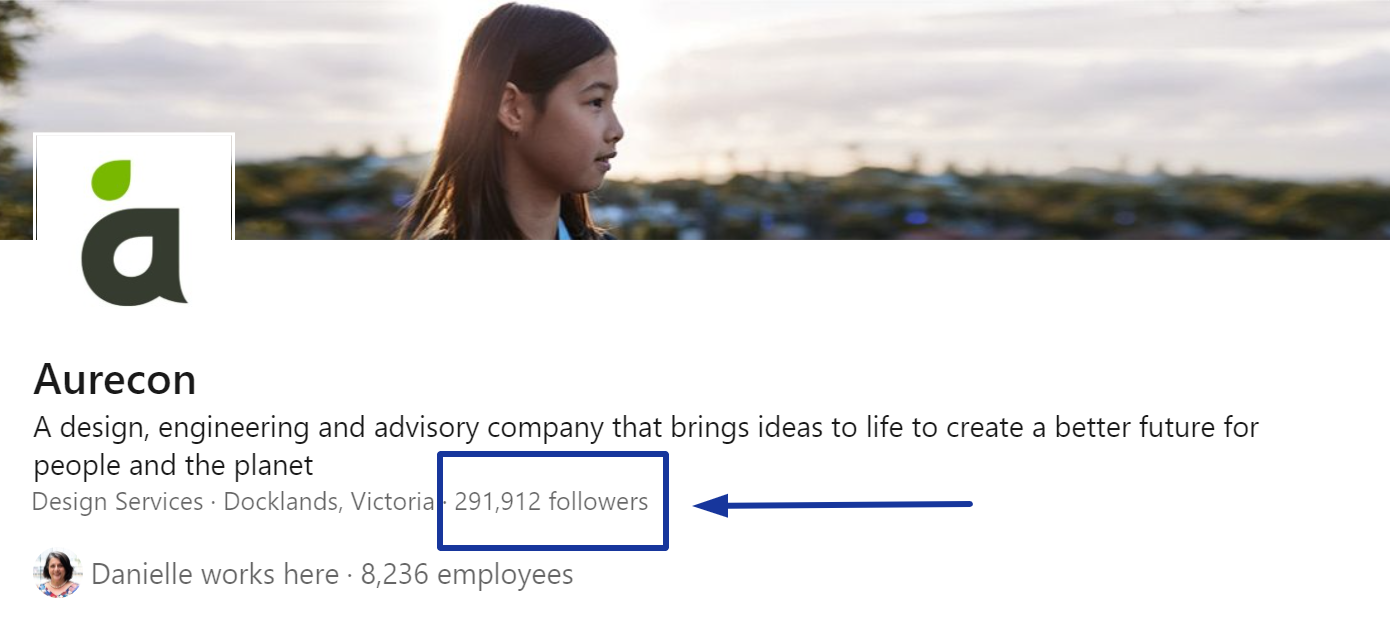
So our employees’ connections and the followership that has brought with us is now really a valuable brand building tool. And there’s a couple of other journeys along the way, but I remember the excitement of getting our first 10,000 followers and in 2012 we were really delighted that LinkedIn actually selected us as one of the top 12 company pages in the world, which was a proud moment for us all.
We got our first 50,000 in 2014, our first 100,000 in 2017. And so all of those milestones have been celebrated with our people because they are our brand ambassadors on that platform. And it’s how it works. I don’t think there’s any particularly brilliant thing that I did, Roger. Just a willingness to experiment and engage and that’s what I certainly would encourage others to do who perhaps are not on that journey.
Roger Christie: It sounds like you’ve had a very workforce-first, very open approach to staff using social media from the outset. Has that led to more problems for you? Do you feel like as a result you’ve been inundated with issues over the years of people doing the wrong things?
Danielle Bond: It’s so interesting because I think this comes back to a philosophy about how you want to lead a team of people. Our philosophy has always been that we would trust that our people will always do the right thing. They’re intrinsically motivated as professionals to do the work that they do professionally and I think you need to manage and lead accordingly. So yes, there might be some outliers, but if you work on the basis that people will mostly want to do the right thing, we then focus on the need to educate them about the purpose of the tool, the opportunities and the risks and provide support to help them do it.
As a brand, you want to also monitor to make sure that if something does go wrong, if somebody does something that’s not aligned with our brand or values or just made a mistake that we can help them to correct that. We do that but also work on the basis that mostly people will do the right thing, and that serves us well.

DIGITAL LEADERSHIP IN PRACTICE.
Roger Christie: If we look back on that journey, I’m keen to delve into the importance of leadership – something we love to unpack on this podcast of course. You obviously worked out very early on the important role that staff and leaders in particular would play in helping you attract and engage talent. So can you talk a bit about your CEO, Bill Cox and his role in driving that wider adoption of social media across the workforce? Has he always been an advocate and user himself?
Danielle Bond: Look, he wasn’t actually. He was on the platform and had been on the platform for many years. But probably like a lot of people, he would post and check-in occasionally. But when he became CEO, he wanted to really address his communication program and saw that social media was one of those channels for him that he wanted to really master.
And he set about doing that with support from my team and I think is now very active on the platform, which is I think a lesson for people in corporate affairs and comms: start off by helping and providing support for a leader to get comfortable. If you are writing a speech for a leader, you learn their voice, you understand what they care about, what they stand for, how they talk about strategy and progress so position it as, ‘We might do that in social media as well to start with’.
But really the power is when your CEO becomes socially active themselves. And so we now have a very social CEO – Bill engages a lot in other people’s posts and when it comes to employees, he’ll write comments and say congratulations.
He connects with people across our industry and clients and that’s been really terrific. As we know from Brunswick Group Connected Leadership, which is a terrific report, is that employees want to work for organisations where their leaders are active on social media. And there’s some incredible data points that would point out that actually they really prefer to work for an organisation where the CEO in particular is socially active. So, having an active CEO on social media serves a couple of purposes, I think.

You have a chief executive who is socially active and employees like that.

They’re invariably very well followed by staff on social media who are themselves active. So it becomes a really good channel to communicate and engage with our people.

It gives permission for people to get there and it perhaps it acts as a useful prompt to other leaders in the business who perhaps aren’t socially active to have another look at that channel that they should be seeing as part of how they do work today.
And, you don’t need to spend hours on social media. You’ve got to know why you are there and understand what you’re trying to achieve, but make time for it.
Roger Christie: Absolutely, I agree with that around it doesn’t have to take all hours of the day, and it’s certainly not something you should be doing at midnight to catch up on work. Whether it’s a CEO in Bill’s case or whether it’s someone else, finding the purpose and the driver behind why you would participate, why you would turn up and why you would make the time is ideally linked to what you’re already doing.
We don’t see social media necessarily as an add on and as something that’s an extra chore. Ideally, it’s a way to do what you’re already doing or a way to do what you’re trying to achieve in a different, more effective, more efficient way. And that’s where we try and work with, with clients to help them work out those pathways.
I think that’s a really good example, Danielle, that brings this brand and, and leader and broader workforce, these different elements together. There was a post that Bill did a couple of weeks ago now around moving office and, and I loved it.
It’s so authentic. It’s so simple, but also considered in its delivery. This is exactly what you are talking about. You could have posted from the brand company page saying, ‘Hey, we’re moving offices. This is our new home kind of thing. Looking forward to hosting all our staff and, and partners’ and whatever – and there’s nothing wrong with that at all.
The difference between that and the delivery from, in this case, your CEO is he was able to tap into years of nostalgia and years of experiences and those little moments that a brand simply can’t tap into in a human way. That brought it to life. Sharing that photo of him sitting behind the desk with paper everywhere and all the comments that that generated of people saying, ‘wow, we’ve come a long way in, in digital technology’ and so on in terms of what it looked like. These are human stories, so it’s not a replacement for the other. That was Bill’s story.
Danielle Bond: Yes, that was totally all Bill. He has – and now this is one thing you would respect, Roger, given your father is an engineer – a treasure trove of photos from every project he has ever worked on. So my team added value by selecting a good photo. But Bill wrote that from top to bottom.
He was great and it’s a great way of engaging many, many people. That was possibly his most popular post on the platform this year. And it did more for letting the industry know that we were moving office than any other communication my team delivered. It’s a good story.
Roger Christie: And I would argue more, and this is the thing, Danielle, that this is a post about moving office – and I’ve read through some of the comments and people are saying – it’s former colleagues, it’s former partners, it’s current colleague, current staff, current partners, and they’re all just talking and sharing a bit of a love in for Aurecon, which is fantastic because this is about moving office.
This is a physical change of environment that leads to, as you were saying, employer branding. This is talent attraction and talent retention. And I think someone even said in one of the comments, ‘Your work is done … You’ll have trouble keeping people out of the office!”
And that is something that a human, in particular a leader can do that a brand may not be able to do in the same way. And, perhaps it connects back to what you were saying before, Danielle, with that conversation you had when Bill stepped into the CEO role of recognising there was a need to do this in a more considered way.
Click here to listen to this conversation in full and subscribe. Drop Roger Christie a note with any thoughts from this conversation – we’d love to hear from you. Thanks again for stopping by!
